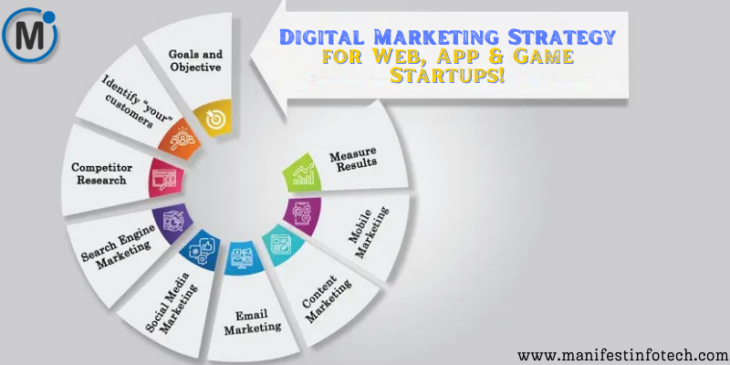
In today’s highly competitive digital landscape, having a great product isn’t enough. Whether you’re launching a web tool, a mobile app, or an exciting new game, success depends heavily on how well you market it. A powerful digital marketing strategy can help your startup stand out, attract users, and scale sustainably. In this post, we’ll break down how to create a results-driven digital marketing plan tailored to web, app, and game businesses.
1. Define Your Target Audience
Your first step should always be understanding who you are marketing to. Are you targeting students who love casual games? Or small business owners looking for productivity tools? The more specific your audience is, the better your strategy will be.
Use audience personas that define age, gender, location, profession, pain points, and online behavior. This helps in choosing the right channels, tone of voice, and promotional content.
2. Choose the Right Marketing Channels
You don’t need to be everywhere — you just need to be where your audience is. Some common channels for startups include:
Search engines (Google Ads, SEO)
Social media (Instagram, LinkedIn, TikTok)
App stores (for apps and games – App Store Optimization)
Email marketing (for onboarding, updates, and offers)
Influencer marketing (especially for games and lifestyle apps)
Test a few, then double down on what brings the best return on investment (ROI).
3. Create Valuable, Engaging Content
Content is the engine of digital marketing. Create blog posts, videos, social media graphics, and tutorials that educate, entertain, or solve problems. For example:
A web app could post “how-to” guides or industry tips.
A mobile game might share teaser videos or behind-the-scenes content.
A productivity app can run a weekly newsletter with productivity hacks.
The key is to provide value, not just promote.
4. Track, Measure, and Optimize
Digital marketing is not a one-time task — it’s an ongoing process. Use tools like Google Analytics, Facebook Insights, and in-app metrics to track user behavior, engagement, conversion rates, and traffic sources.
Make sure to measure:
Traffic volume & sources
User engagement
Cost per acquisition (CPA)
Retention and churn rates
From there, adjust your strategy based on what’s working (and what’s not).
5. Build Relationships, Not Just Traffic
User loyalty often drives more growth than one-time installs or visits. Use email marketing, push notifications, and loyalty programs to build a lasting connection with your users. Engage actively on social media, respond to comments, and create a brand voice people relate to.
Final Thoughts
Creating a powerful digital marketing strategy for your startup isn’t about throwing money at ads. It’s about understanding your users, reaching them with the right message, and delivering ongoing value. Whether you’re building a SaaS tool, launching the next viral game, or releasing a productivity app — strategy is what turns ideas into success.
If you are looking for any services related to Website Development, App Development, Digital Marketing and SEO, just email us at nchouksey@manifestinfotech.com or Skype id: live:76bad32bff24d30d
𝐅𝐨𝐥𝐥𝐨𝐰 𝐔𝐬:
𝐋𝐢𝐧𝐤𝐞𝐝𝐢𝐧: linkedin.com/company/manifestinfotech
𝐅𝐚𝐜𝐞𝐛𝐨𝐨𝐤: facebook.com/manifestinfotech/
𝐈𝐧𝐬𝐭𝐚𝐠𝐫𝐚𝐦: instagram.com/manifestinfotech/
𝐓𝐰𝐢𝐭𝐭𝐞𝐫: twitter.com/Manifest_info
#DigitalMarketing #StartupMarketing #AppMarketing #GameMarketing #WebAppGrowth #MarketingStrategy #StartupTips #GrowthHacking #SaaSMarketing #MarketingForDevelopers